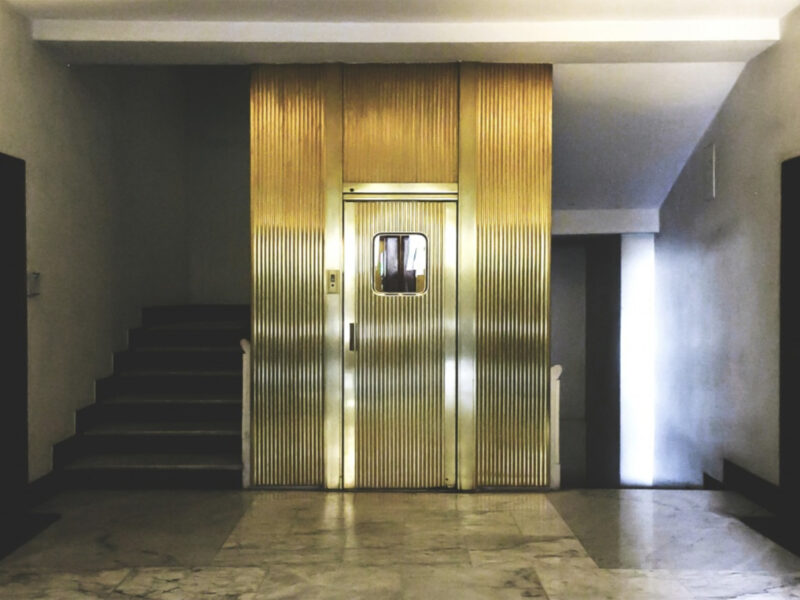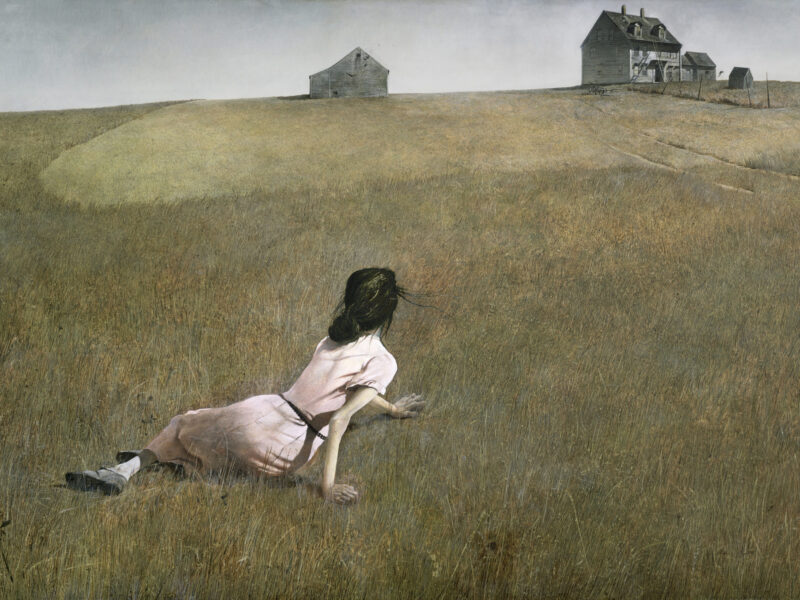Interview | Elinor Carucci
Well, maybe this is the definition of photography; producing death through the desire of preserve life. It might be the reason why we are all photographers. I’m not only talking about professional photographers or fine art photographers, but I mean all of us, we all want to preserve life. It’s like… there is an illusion there. We’re not really preserving the life itself, or the places, or the people, or the moments or the body parts. We are preserving a kind of representation. And death might be the reason why most of us take pictures in a way. I know it sounds very dark, but the fear of things coming to an end, and the fear of loss, is the reason why we take pictures, or maybe one of the main reasons.

“My Uterus” | Midlife | 2015.
I try to preserve certain moments because they are not ever ending. They finish and we cannot restart them. I can just photograph them and keep the photograph. It’s interesting that you’re using the word “repetition” as a metaphor for love. It’s really interesting because it is a big part of what I do in terms of commitment to photography, to my beloved ones, to my children and all of my relationships. I passed over four decades with my mother, my husband, my children, and these relationships are the main themes that I keep developing, and the repetition is never the same. There is something about following relationships for a very long time that takes us deeper into the pure essence of our connection with the others. But everything is always evolving, and changing, and different, and I am trying to capture it because it’s a journey that we go through in motherhood, or in marriage and so on.
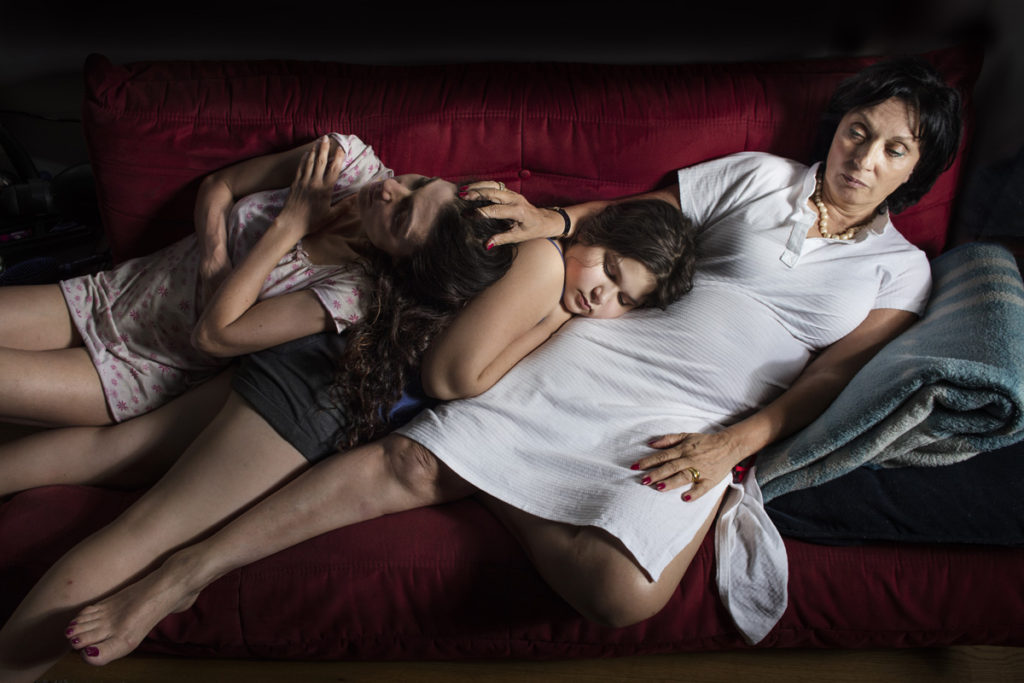
“Three Generations” | Midlife | 2016
Well, it’s more than not being afraid of showing love, this is really one of the themes that I want to highlight, and it is about the sensual connection in “Mother” and also in “Midlife”. The sensual connection between people, between mother and child, it’s something that many people get very nervous looking at, as if were not coming to the world naked. We’re so sexually and physically connected to each other, and this is a beautiful, healthy thing. It’s not something that we should hide or be ashamed of, and this is not to be confused with sex. Loving your children with all of your body, and “having the sensuality” with them, it might affect their sexuality when they’ll become adults, but it is something essential, beautiful and healthy. Ask Freud.

“The dance of marriage” | Midlife | 2013
I think the suspension comes because I can never reveal everything about myself, even if I try to be completely open to the camera: my body, my soul, my thoughts, my fears, my flaws and the suspension is not something I’m striving for. It’s just the limit of what we all do, even if you’re a film director, or a musician you can try to show and go deep through the layers and complexities of your subject matters but you can never get everything. There are always secrets left, hidden elements, and maybe I just don’t have enough talent or ability to get them, but I think the suspension is not a theme that I’m applying to my work. It’s just the limit of what I do as a photographer.
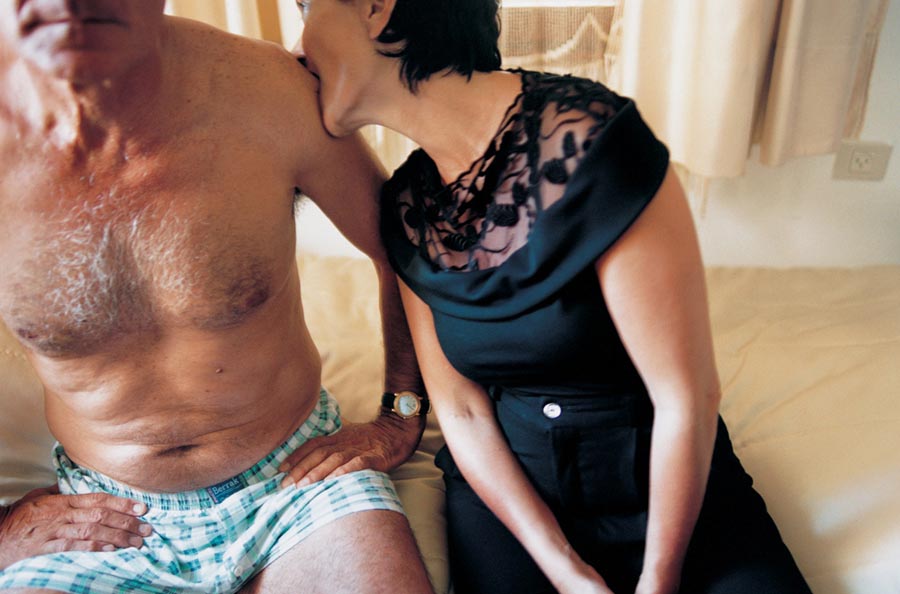
“Bite 1” | Closer | 2001
In this deep, delicate, overwhelming, furious love, there is also love for oneself. I am thinking about: “Snow and gray roots” or “Winter” or even “The dance of marriage”. That kind of love that takes place in our silence and that, once found, finds the others, the intertwining of the other …
Some of the work shows the beautiful elements that I love in my life, and I want to share them especially as a part of my midlife: my love, my trust, my friendship with my husband and all the things that I’m most proud of. These are all the things that we love and hate. I don’t necessarily love my gray roots, actually I don’t like them at all. But I have to accept them. It’s a part of me, and this photograph is showing this part, and I’m trying to embrace and accept it, and maybe at some time in my life I’ll be able to see all the good parts of my middle-aged years.

“Halfway” | Midlife | 2019
In your works, it seems that all conflict resolutions take place in silence as in the great Greek tragedies where the logic of justice is contrasted with the logic of revenge…
In a way, this is for me the strength of photography. Freezing a second let us look at life in a unique way that we wouldn’t find if we were living this moment or if we see it in a video, or film or painting. Silence is part of the “medium” photography, and the ability to freeze a moment and to analyze it, let us experience it, let us live it through silence.
Today the most exploited intrigue is about the opposition between love and repetition, the clichés of life, a struggle that we see more and more as necessary, as a perfect pure creation. Is this really so?
I find that repetition it’s not really repetition. It’s more commitment. It’s the element of time because nothing is being repeated, and even if I want to make a picture of moments that happened, and I’m trying to repeat them, there is always something different and there is always something surprising, and I can’t never replicate a moment. I’m not where I was yesterday, or a year ago, or forty nine and a half years ago when I was born. We want to think we can repeat a day, we can do something again, but it’s always different because nothing is never the same. You cannot completely repeat something and this is why I take pictures. There is something very painful about this. I had a teacher during art school in Jerusalem, Simcha Shirman, is a very well-known artist in Israel, and he said that photography could never completely be happy, even through happy pictures. Smiling people are always a little sad because they are always nostalgic. They are always sad about a moment that happened, even if it was yesterday or 10 years ago, that will never happen again, and they are always sad about time passing.

“Cherries I ate by myself” | Crisis | 2003
In “Love in the time of Corona” the figure of the mother shows herself with a discreet but powerful force. Your eyes are the only ones watching. Lean on you, your children seem safe. Yet there is something ambiguous in this photograph, in this shot … As if relationships had changed, not necessarily more fragile but more delicate, afraid, confused …
Well, this image was taken very early, when the pandemic hit and it is an homage to Dorothea Lange’s “Migrant mother”, which I saw at the Museum of Modern Art. It was the last print I saw before the lockdown, and it was the last image that I saw in person at MOMA and then the first picture that I took over Covid-19. This image was about the need to protect my children, and when you are saying my eyes are the only one watching and my children seem safe, you are right. It’s about how am I keeping my children safe, over the role of the mother as a protector, but I was still puzzled because there are many other things that I am, and I’d have liked to express through this picture. When the first lockdown started I was scared and anxious but my first reaction was like: “how am I keeping my children safe?” Maybe I quote this photograph by Dorothea Lange about Mother’s Love in time of distress, but also, I didn’t really know how to photograph my new reality… I was so puzzled by this new world we live in and what does it mean to be a mother and how can I keep my children safe.
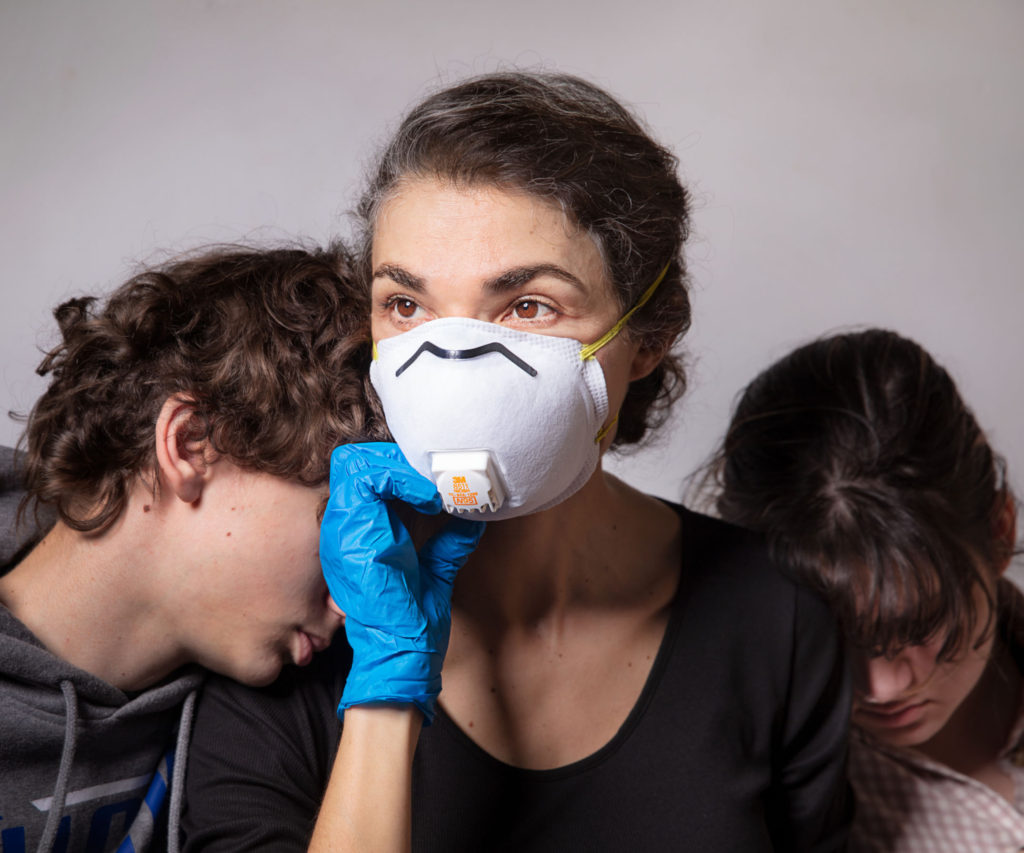
“Love in the time of Corona” | 2020
I think this is also one of the reason why I take photographs. It is very true what you are saying about the abyss between the people, and my need to connect to the people in my family, but also to people in general. This is the work I make because I want to be closer to them; to my children, my parents, my husband and I show the work and share it because I want to be closer to other people. I think this is something we are, it is one of the things we struggle when we are coming to the world alone. We are used to die alone and we want to connect with people, and my photography is trying to get me closer to them to narrow this gap, this abyss between me and my husband, between me and my children. My work is trying to bring me closer to other people and that’s why I try to make my work “universal” because I want to being in touch with other people’s lives. I want to touch other people. I want them to open up to my work in a way, I want to be close to them, to everyone. I guess we all want to unite ourselves with the world, and most of the pain and sadness comes because we can’t complete ourselves.
Featured Image: “Workout” | Midlife | 2016
All Photographs by Elinor Carucci | Website | Instagram | Facebook


